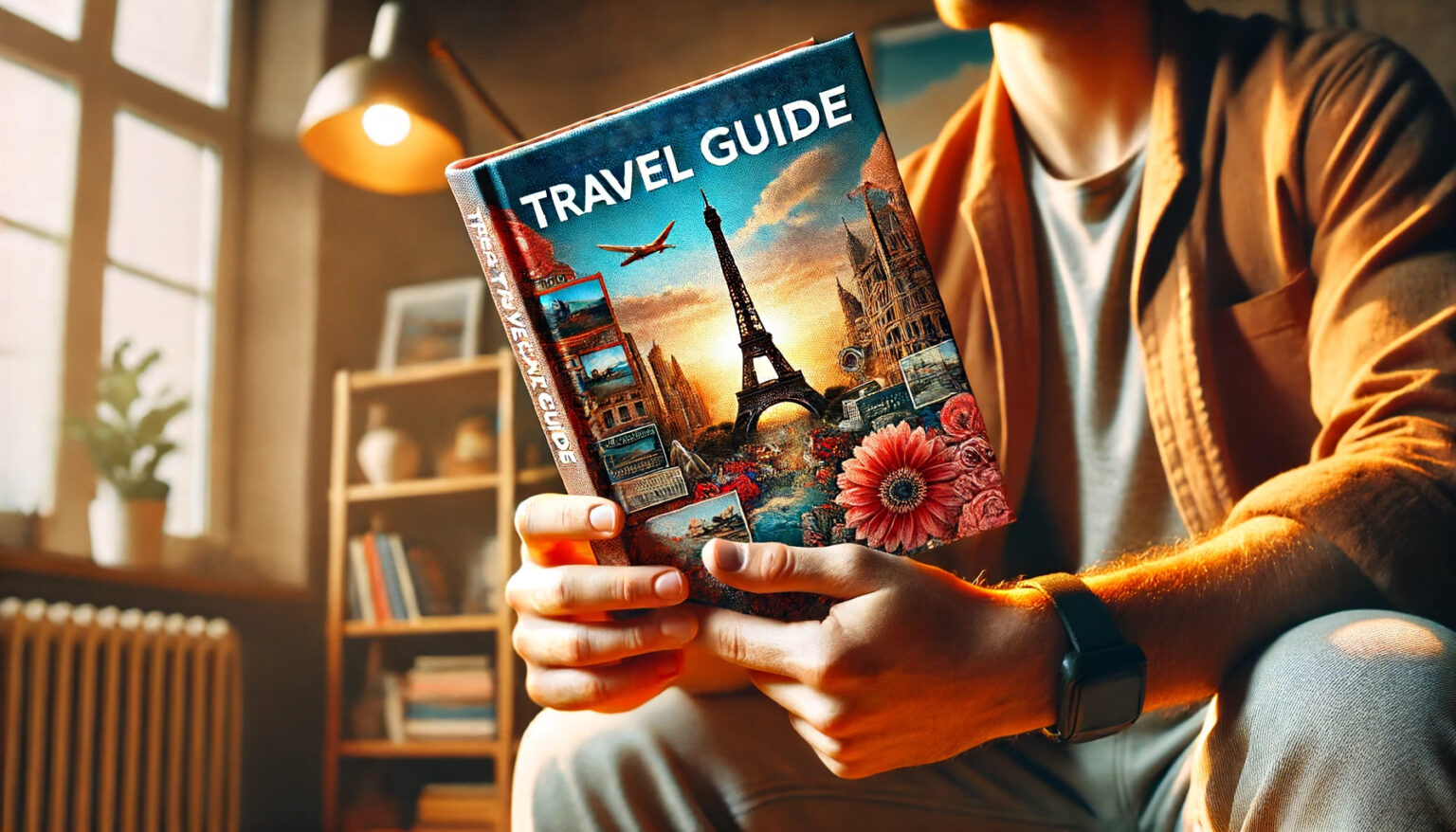Travel guides have long been a staple for wanderlust-filled readers, offering essential tips, itineraries, and insights for destinations around the globe. Their popularity remains robust, driven by the growing interest in personalized and unique travel experiences.
Self-publishing, a once-niche avenue, has now become a mainstream option for many authors. This method allows writers to bypass traditional publishing houses, enabling them to take control of the entire publishing process, from manuscript to market. Platforms like Amazon KDP and Google Play Books have revolutionized the way authors can reach their audience, making it easier than ever to publish independently.
For travel writers, self-publishing presents an enticing opportunity. It allows them to share their adventures and expertise without the delays and restrictions often associated with traditional publishing. They can tailor their content to specific audiences, experiment with various formats, and enjoy higher royalties. The appeal lies in the creative freedom, faster time to market, and the potential for greater financial rewards. For those passionate about travel and writing, self-publishing offers a viable and rewarding path to share their journeys with the world.
Your Publishing Journey Awaits – Start NowComplete Creative Control
One of the most significant advantages of self-publishing your travel guide is the complete creative control you gain over your work, in stark contrast to the constraints often encountered when dealing with a traditional publishing house. In self-publishing, you are the master of your manuscript, dictating every aspect of the book’s creation and presentation. This freedom allows you to ensure that your vision is fully realized, without compromise.
In traditional publishing, authors often face numerous restrictions. Publishing houses typically have established processes and guidelines that can limit an author’s creative input. For instance, editors may request changes to the manuscript to fit market trends, or designers might produce cover art that doesn’t align with the author’s vision. The approval process for major decisions can be lengthy and often leaves authors feeling detached from their work.
In contrast, self-publishing empowers you to make all the key decisions regarding your book. You have the liberty to choose your cover design, ensuring it captures the essence of your travel guide and appeals to your target audience. Whether you prefer a minimalist aesthetic or a vibrant, photo-rich cover, the choice is entirely yours.
Book layout is another area where self-published authors enjoy unparalleled freedom. You can decide on the structure and format that best suits your content, whether it’s a traditional chapter-based layout, a visually driven guide with maps and photos, or a combination of both. This flexibility allows you to create a travel guide that is both functional and engaging for your readers.
Content is, of course, the heart of any book. Self-publishing allows you to maintain your authentic voice and vision throughout the manuscript. You can include unique features such as personal anecdotes, off-the-beaten-path recommendations, and custom itineraries that might be deemed too niche by traditional publishers. This ability to tailor content ensures that your travel guide stands out and resonates with readers seeking genuine, firsthand experiences.
Faster Time to Market
One of the standout advantages of self-publishing is the significantly faster time to market. In the traditional publishing world, the journey from manuscript to published book can be long and arduous, often taking anywhere from 12 to 24 months. This extended timeline is due to several factors, including the submission and acceptance process, editorial schedules, design phases, marketing strategies, and distribution logistics. For travel writers eager to share timely and relevant content, such delays can be a major drawback.
In contrast, self-publishing dramatically shortens this timeline. With platforms like Amazon Kindle Direct Publishing (KDP) and Spines, authors can upload their manuscripts and see their books available for purchase within days or weeks. This rapid publication process allows authors to respond quickly to current trends and events in the travel industry, ensuring their content remains fresh and relevant. Self-publishing on platforms like Spines, a publishing platform enhanced by the combination of human expertise and AI technology, offers an efficient path to getting a book published, bypassing traditional publishing gatekeepers and significantly accelerating the journey from manuscript to market.
The benefits of rapid publication for travel content are substantial. Travel is a dynamic field, with new destinations gaining popularity, travel restrictions changing, and cultural events happening regularly. Being able to publish quickly means your travel guide can include the most up-to-date information, making it more valuable to readers. For example, if a new attraction opens or a significant cultural festival is announced, a self-published author can swiftly update their guide and release a new edition, keeping their audience informed and engaged.
Additionally, quicker time to market allows self-published travel writers to capitalize on peak travel seasons. By aligning their publication schedule with high-demand periods, such as summer vacations or holiday seasons, authors can maximize their book sales and visibility. This strategic timing can significantly boost the book’s success and the author’s reach.
Higher Royalties
One of the most compelling reasons to self-publish your travel guide is the potential for higher royalties. Self-published books often enjoy royalty rates significantly higher than those offered by traditional publishing houses. In the traditional publishing model, authors typically receive royalty rates ranging from 5% to 15% of the book’s retail price. These rates can be even lower for paperback and hardcover editions. Furthermore, authors often receive an advance, which must be earned back through sales before they start receiving royalties.
In contrast, self-publishing platforms like Amazon Kindle Direct Publishing (KDP) offer significantly higher royalty rates. On KDP, authors can earn royalties of up to 70% on eBooks priced between $2.99 and $9.99, and up to 35% on books priced outside this range. Spines self-publishing platforms offer similar competitive rates, with authors retaining 70-100% of their royalties. This stark difference in royalty rates means that self-published authors retain a much larger share of the revenue from each sale.
Higher royalties benefit self-published authors in several ways. Firstly, they provide a greater financial return on the author’s investment of time and effort. Given that self-published authors bear the costs of editing, cover design, and marketing, the higher royalty rates help offset these expenses more quickly and generate profit sooner. This financial independence allows authors to reinvest in their work, improving the quality of subsequent editions or new titles.
Moreover, the financial benefits of self-publishing extend beyond just the book sales. Successful self-published authors often explore additional revenue streams, such as offering paid travel consultancy services, creating online courses, or securing speaking engagements. The higher income from book sales can provide the financial foundation to pursue these opportunities, further increasing the author’s earning potential.
Your Publishing Journey Awaits – Start NowFlexibility in Pricing and Formats
One of the major advantages of self-publishing your travel guide is the unparalleled flexibility it offers in pricing and formats. Unlike traditional publishing, where pricing is often determined by the publishing house, self-publishing allows you to set and adjust your book’s price to suit your marketing strategy and reader demographics. Additionally, considering the option of offering a free eBook version of your travel guide can serve as an effective promotional strategy, attracting readers with the allure of a complimentary digital copy.
As a self-published author, you can set the initial price of your travel guide, experimenting with different price points to see what resonates best with your audience. You can also offer discounts and promotions to boost sales during peak travel seasons or to coincide with holidays and special events. For instance, offering a temporary price reduction can attract new readers who might be hesitant to purchase at the full price. Limited-time offers and bundling deals, where you combine your travel guide with other related products, can also be effective strategies to increase sales and readership.
In addition to pricing flexibility, self-publishing allows you to offer your travel guide in multiple formats. eBooks are a popular choice due to their convenience and accessibility; travelers can easily download and access your guide on their devices while on the go. Print-on-demand (POD) services enable you to offer physical copies of your book without the need for large upfront printing costs. POD ensures that books are printed only when ordered, reducing waste and financial risk. Furthermore, audiobooks are becoming increasingly popular, providing an alternative format for readers who prefer to listen to content while traveling.
The flexibility in formats helps you reach a wider audience and cater to different reading preferences. For example, some readers might prefer the tactile experience of a physical book, while others might opt for the convenience of an eBook or the immersive experience of an audiobook. By offering your travel guide in various formats, you can meet the diverse needs of your readers and expand your market reach.
In summary, the flexibility in pricing and formats offered by self-publishing empowers travel writers to tailor their marketing strategies and meet the varied preferences of their readers. This adaptability not only enhances the book’s appeal but also maximizes its reach and sales potential.
Direct Access to Distribution Channels through Kindle Direct Publishing
One of the key benefits of self-publishing your travel guide as an independent publisher is direct access to powerful distribution channels such as Amazon Kindle Direct Publishing (KDP) and Google Play Books. These platforms offer a global reach, allowing your travel guide to be discovered by readers around the world, irrespective of their location.
Amazon KDP is one of the most popular self-publishing platforms, offering authors the ability to publish eBooks and print-on-demand paperbacks. With KDP, your travel guide can be listed on Amazon’s extensive marketplace, which attracts millions of visitors daily. Google Play Books provides another valuable platform, making your book accessible to users of Android devices and the Google ecosystem. Both platforms offer tools to track sales, monitor performance, and make adjustments to your marketing strategies in real-time.
Wide distribution is crucial for reaching a global audience. Travel guides, by their nature, have the potential to attract readers from diverse geographical regions, each with a keen interest in exploring new destinations. By leveraging platforms like Amazon KDP and Google Play Books, you can ensure that your travel guide is available to readers worldwide, increasing its visibility and sales potential. These platforms also support multiple languages and currencies, making it easier for international readers to purchase your book.
Successful distribution strategies for travel guides often involve a multi-platform approach. For instance, some authors choose to distribute their eBooks through Amazon KDP while simultaneously offering print-on-demand copies via IngramSpark, which has a broad distribution network reaching bookstores and libraries. This approach ensures that the travel guide is available in both digital and physical formats, catering to different reader preferences.
Another effective strategy is to take advantage of the promotional tools offered by these platforms. Amazon KDP, for example, allows authors to run Kindle Countdown Deals and free book promotions, which can significantly boost visibility and sales. Google Play Books offers promotional pricing and pre-order options, enabling authors to generate buzz and anticipation before the official release date.
Ownership of Rights vs. Traditional Publishing House Contracts
One of the most significant advantages of self-publishing is the ability to retain full ownership of your intellectual property rights. When you self-publish, you maintain complete control over your work, including the rights to the content, cover design, and any future adaptations or editions. This ownership extends to all formats and territories, giving you the flexibility to manage and leverage your intellectual property as you see fit. Additionally, retaining these rights can open doors to opportunities such as landing a traditional book deal, where you can establish authority in your niche and potentially achieve significant financial success through your self-published books.
In the traditional publishing model, authors often sign contracts that transfer a substantial portion of their rights to the publishing house. This can include rights to print, digital, and audio versions of the book, as well as international rights and adaptation rights for movies or television. While this can provide a wide distribution network and additional resources, it also means that the author loses a significant degree of control over their work.
Retaining rights to your work as a self-published author comes with numerous benefits. Firstly, it allows you to make decisions that align with your vision and goals. You have the freedom to update or revise your book at any time, ensuring that your content remains current and relevant. This is particularly important for travel guides, where information can quickly become outdated. You can release new editions with updated content, maps, and recommendations without needing approval from a publisher.
Another advantage is the ability to license your content for different uses and markets. For example, you could partner with other travel-related businesses to offer exclusive content or create branded versions of your guide for specific organizations or events. Licensing deals can provide a steady income stream while still allowing you to retain overall control of your intellectual property.
Enhanced Marketing Opportunities
Self-publishing your travel guide gives you unparalleled control over your marketing strategies, allowing you to tailor your promotional efforts to best reach and engage your target audience. Unlike traditional publishing, where marketing efforts are often managed by the publishing house and may be limited in scope, self-publishing puts the power of promotion directly into your hands.
One of the most effective ways to market your travel guide is through social media. Platforms like Instagram, Facebook, Twitter, and Pinterest offer robust tools for reaching travel enthusiasts. You can share engaging content such as stunning travel photos, behind-the-scenes looks at your writing process, and excerpts from your guide. Social media also allows for direct interaction with your audience, fostering a sense of community and building a loyal following.
Blogs and email lists are also powerful tools for promoting your travel guide. By maintaining a travel blog, you can provide valuable content to your readers, such as travel tips, destination highlights, and personal travel stories. This not only drives traffic to your site but also establishes you as an authority in the travel niche. Including links to your travel guide within your blog posts can help convert readers into buyers.
Email marketing is another effective strategy. Building an email list of interested readers allows you to communicate directly with your audience, offering exclusive content, special discounts, and updates about your travel guide. Regular newsletters can keep your readers engaged and excited about your work, increasing the likelihood of them purchasing your guide and recommending it to others.
In summary, self-publishing provides enhanced marketing opportunities by giving you full control over your promotional strategies. Utilizing social media, blogs, and email lists allows you to effectively reach and engage your audience, driving sales and building a loyal readership. Successful case studies demonstrate the power of these tools in creating buzz and generating significant sales for self-published travel guides.
Building a Personal Brand
Building a personal brand is crucial for authors, especially in the competitive world of travel writing. A strong personal brand helps establish your identity as an expert in your niche, creating a loyal reader base and opening up various opportunities for growth and monetization. Self-publishing plays a significant role in building and maintaining an author’s brand, offering the flexibility and control necessary to develop a distinct and recognizable presence.
Personal branding involves more than just writing books; it’s about creating a cohesive image and message that resonates with your audience. As a travel writer, your brand might encompass your unique travel philosophy, the destinations you specialize in, your writing style, and the overall experience you provide to your readers. A well-crafted personal brand can differentiate you from other authors, making your work more memorable and attractive to potential readers.
Self-publishing allows you to fully align your book’s content, design, and marketing with your personal brand. You can choose cover designs, titles, and layouts that reflect your brand’s aesthetics and values. You have the freedom to write in your authentic voice, include personal anecdotes, and focus on destinations or travel styles that you are passionate about, without the constraints often imposed by traditional publishers. This consistency helps reinforce your brand identity across all your works.
Moreover, self-publishing enables you to engage directly with your audience, further solidifying your brand. You can build a strong online presence through a dedicated website, social media profiles, and a blog. Sharing your travel experiences, tips, and insights regularly can attract a following that identifies with your brand. Engaging with readers through comments, emails, and social media interactions fosters a sense of community and loyalty.
Several travel authors have successfully built strong personal brands through self-publishing. One notable example is Nomadic Matt, whose self-published travel guides and blog have made him a household name in budget travel. By consistently sharing valuable content and maintaining a distinct voice, he has built a loyal audience and expanded his brand to include courses, speaking engagements, and partnerships.
Building a personal brand is essential for authors looking to stand out in the travel writing niche. Self-publishing offers the tools and flexibility to create a cohesive and compelling brand that attracts and retains readers. By maintaining consistency in your content, design, and engagement strategies, you can establish a strong personal brand that enhances your visibility and success as a travel writer.
Your Publishing Journey Awaits – Start NowImmediate Feedback from Readers
One of the most valuable aspects of self-publishing is the ability to receive immediate feedback from readers. Direct interaction with your audience through reviews, comments, and social media engagement provides insights that can be instrumental in refining your work and enhancing your future travel guides.
When you self-publish, readers can leave reviews and comments on platforms like Amazon, Google Play Books, and Goodreads. These reviews offer a wealth of information about what readers loved, what they found lacking, and what they hope to see in your future works. Positive reviews can boost your book’s visibility and credibility, while constructive criticism can highlight areas for improvement.
The importance of feedback in improving future works cannot be overstated. By paying attention to reader comments, you can identify trends and common suggestions. For example, if multiple readers mention that they found certain sections of your travel guide particularly helpful, you can consider expanding those areas in your next book. Conversely, if readers express confusion about certain details or suggest additional information, you can address these points in future editions or new guides.
Engaging with readers is key to building a loyal audience and fostering a sense of community. Here are some strategies to effectively engage with your readers:
1. Respond to Reviews and Comments: Take the time to thank readers for their feedback, whether it’s positive or constructive. Acknowledging their input shows that you value their opinions and are committed to improving your work.
2. Social Media Interaction: Use social media platforms to interact with your audience. Share updates about your writing process, ask for input on future projects, and respond to questions and comments. This not only helps you stay connected with your readers but also keeps them engaged and invested in your work.
3. Create a Reader Mailing List: Build an email list to keep in touch with your readers. Regular newsletters can include exclusive content, updates about upcoming releases, and opportunities for readers to provide feedback or participate in surveys.
4. Host Q&A Sessions: Organize live Q&A sessions on social media or through webinars. These sessions give readers a chance to interact with you directly, ask questions, and share their thoughts. It also provides an opportunity for you to gain deeper insights into their preferences and interests.
5. Offer Advanced Review Copies (ARCs): Provide ARCs to a select group of readers or influencers before the official release of your book. This can generate early reviews and buzz, and the feedback received can be used to make final adjustments.
By actively seeking and responding to reader feedback, you can continuously improve your travel guides, ensuring they meet the needs and expectations of your audience. This ongoing dialogue with readers not only enhances the quality of your work but also builds a dedicated and engaged readership that will support your future endeavors.
Opportunity to Niche Down
One of the greatest advantages of self-publishing is the ability to target specific niches within the travel genre. Traditional publishers often focus on broad, mainstream topics to maximize their market reach, which can limit an author’s ability to explore more specialized or unique themes. Self-publishing, however, allows you to cater to niche markets, addressing the particular interests and needs of specific reader groups.
Targeting a niche market means you can create highly focused content that deeply resonates with a particular audience. This approach not only helps differentiate your travel guide from the countless others on the market but also allows you to establish yourself as an authority in a specific area. Whether it’s eco-tourism, solo female travel, adventure sports, or cultural heritage, niching down enables you to connect with readers who are passionate about those specific topics.
The benefits of focusing on niche markets are manifold. Firstly, it reduces competition. While general travel guides face stiff competition from well-known brands and established authors, niche travel guides often operate in less crowded spaces, giving you a better chance to stand out. Additionally, niche readers tend to be more loyal and engaged, as they are actively seeking content that caters to their specific interests. This loyalty can translate into higher sales, repeat customers, and strong word-of-mouth recommendations.
Moreover, niche markets often have dedicated online communities, forums, and social media groups where you can promote your book and interact with potential readers. These communities are invaluable for marketing your travel guide and building a fanbase.
Self-publishing offers the unique opportunity to niche down within the travel genre, allowing you to create specialized content that stands out in a crowded market. By focusing on niche markets, you can reduce competition, build a loyal audience, and establish yourself as an authority in your chosen area. This targeted approach not only enhances your book’s appeal but also increases its chances of success.
Community and Support Networks
For self-published authors, having access to a supportive community and network can be invaluable. The journey of self-publishing can be challenging, but you don’t have to go through it alone. There is a wealth of resources and support available to help you navigate the process, improve your skills, and connect with fellow authors.
Online forums, social media groups, and dedicated websites provide platforms where self-published authors can share experiences, ask for advice, and offer support. Communities like KBoards, Goodreads Author Groups, and Facebook groups dedicated to self-publishing are excellent places to start. These forums cover a wide range of topics, from marketing strategies and technical advice to emotional support and motivation.
Writer communities and networks are crucial for several reasons. Firstly, they provide a sense of camaraderie and shared experience. Writing and publishing can be solitary endeavors, and being part of a community helps mitigate feelings of isolation. Engaging with other writers can also spark inspiration, generate new ideas, and offer different perspectives on your work.
Networking with other authors can lead to valuable collaborations and opportunities. Joint promotions, co-authoring projects, and cross-marketing efforts can significantly boost your visibility and sales. Additionally, experienced authors often share their insights and tips, helping you avoid common pitfalls and accelerate your publishing journey.
For travel writers, specific resources can further enhance your self-publishing efforts. Organizations like the Society of American Travel Writers (SATW) and the International Travel Writers Alliance offer memberships that provide access to industry news, networking events, and professional development opportunities. These organizations often host conferences and workshops where you can learn from established travel writers and industry experts.
Online courses and webinars focused on travel writing and self-publishing are also valuable resources. Websites like Udemy, Skillshare, and MasterClass offer courses on various aspects of writing, marketing, and publishing, taught by successful authors and professionals. These courses can help you refine your skills, stay updated with industry trends, and learn new techniques to enhance your travel guides.
Furthermore, there are numerous blogs and websites dedicated to travel writing and self-publishing, such as The Creative Penn, Self-Publishing School, and Jane Friedman’s blog. These sites offer free articles, guides, and tools that can assist you at every stage of the publishing process.
In summary, the community and support networks available to self-published authors are extensive and varied. Participating in writer communities and networks provides emotional support, practical advice, and valuable connections. Leveraging these resources, especially those tailored for travel writers, can significantly enhance your self-publishing journey and help you achieve success.
Your Publishing Journey Awaits – Start NowFinal Thoughts
Self-publishing offers a myriad of benefits for travel writers, from complete creative control and faster time to market to higher royalties and flexible pricing options. It also provides the potential for diversified income streams, immediate feedback from readers, and the ability to target specific niches. These advantages make self-publishing an appealing and viable option for aspiring travel writers.
For a successful self-publishing journey, consider these final tips:
1. Invest in Quality: Ensure your travel guide is professionally edited, well-formatted, and has an eye-catching cover design.
2. Leverage Marketing Tools: Use social media, blogs, and email lists to promote your book and engage with your audience.
3. Seek Feedback: Embrace reader reviews and constructive criticism to improve your work and build a loyal readership.
4. Network: Join writer communities and attend workshops to gain insights, support, and collaboration opportunities.
5. Stay Persistent: The self-publishing journey can be challenging, but persistence and continuous learning will pave the way to success.
If you have a passion for travel and a desire to share your experiences, self-publishing is a powerful way to bring your travel guides to life. It allows you to retain full ownership of your work, engage directly with your audience, and build a personal brand that reflects your unique perspective and voice.







